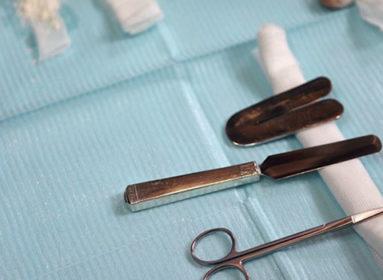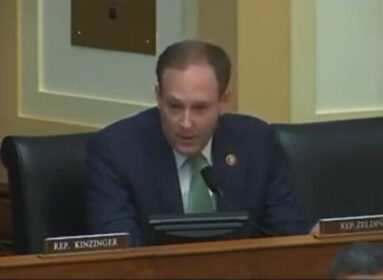AMHERST, MASS. – Things often slow down for some organizations during the hot summer months, but not at the Yiddish Book Center in Amherst, Mass.
The Book Center was hopping with teens delving into Jewish literature, college students immersed in Yiddish language and culture, and the development of several new programs designed to bring the love of the Yiddish language to the Pioneer Valley.
In the middle of all of the activity has been Josh Lambert, the Book Center’s academic director. Before joining the Book Center, Lambert served as a Dorot Assistant Professor/ Faculty Fellow in the Skirball Department of Hebrew and Judaic Studies at New York University. He holds a BA from Harvard and a PhD from the University of Michigan in English literature. His teaching and research focus is on American Jewish literature and culture, in English and Yiddish. He is the author of “American Jewish Fiction: A JPS Guide” and a contributing editor to Tablet, and his work has appeared in “The Jewish Graphic Novel” and “Sleepaway: Writings on Summer Camp.”
Lambert also writes reviews and essays for publications including the Forward, the Los Angeles Times, and the Globe and Mail.
Lambert recently talked about all that is going on at the Yiddish Book Center.
Q: Can you tell me about the Great Jewish Books program you ran this summer for teens? Was this the first year for this program?
A: Yes, this was our first year running Great Jewish Books, and it was astonishing. We had 18 high school students (rising juniors and seniors) from all across the U.S. (and Toronto!) including Kansas, New Mexico, and all sorts of other places. We had a nearly even boy/girl split, and we had students who identified as Orthodox, Conservative, Reform, and unaffiliated. The students spent their mornings discussing modern Jewish literature in sessions co-led by myself and fiction-writer Sana Krasikov. The level of discussion was really high; the students were smart, mature, thoughtful, engaged, and kind. They read Roth, Paley, Spiegelman, Ozick, Sholem Aleichem, Babel, and many others with great curiosity, and they were eager to talk about issues of identity and culture. They had intimate Q&A time with novelist Allegra Goodman and poet and critic Adam Kirsch, as well as with Aaron Lansky. In their free time, they went to Look Park, Cook Farms, and Amherst Center, and they also spent a fair amount of their free time reading aloud to each other, reading silently together, playing games, and sitting on the balcony of their dorm talking about God and singing pop songs. The talent show on Saturday night featured a (modern Orthodox) boy singing as many TV theme songs as he could in three minutes; another boy reciting the (critical-of-religion) lyrics of a Frank Zappa song; and a beautiful Yiddish and English duet of “Bay Mir Bistu Sheyn.”
Q: So you were able to get teenagers to appreciate reading Yiddish stories?
A: The texts we read weren’t all Yiddish (and they were all taught in English translation): the goal was to introduce them to the diversity and range of modern Jewish literature, so we read stories originally written in German, Russian, Italian, English, and Hebrew in addition to Yiddish. But students responded particularly strongly to the Yiddish stories we read by Sholem Aleichem and Isaac Bashevis Singer and the poetry of Avrom Sutzkever. Bashevis and Sholem Aleichem are so funny, so insightful, that it doesn’t take any convincing, and I don’t think there’s anyone on the planet who would not be moved by Sutzkever’s poetry from the Vilna ghetto.
Q: You also continued your Steiner Summer Yiddish program. How has that program grown or changed over the years?
A: What began many years ago as an internship in which college students helped with some of the labor at the Center in exchange for Yiddish lessons has developed into a full-fledged and rigorous intensive summer program in language and culture. This summer we had 14 students from the U.S., Canada, Hungary, Ukraine, and Israel studying at the Center for seven weeks. In addition to a week-long field trip to New York City, the students participated in three hours of daily language instruction, and another hour and a half seminar in history and literature with lecturers including David Shneer, Sam Kassow, Justin Cammy, and myself. Students were encouraged to pursue independent projects of their own choosing; among other projects, students created Yiddish comic strips, analyzed Yiddish advertising, wrote original short fiction in Yiddish, created a satirical newspaper, and performed songs. What really made the program stand out this summer was the balance between how hard the students were working and how much they enjoyed hanging out with one another and creating a community.
Q: Can you tell me where are some of its graduates now?
A: Alumni of the Center’s summer programs from the early years have established themselves as some of the country’s most respected scholars in the field of Jewish Studies (Naomi Seidman at the Graduate Theological Union in Berkeley, Jeremy Dauber at Columbia, Sarah Stein at UCLA). Among the younger cohort, some of the alumni are editors (e.g, Sonia Isard at Lilith), singer-songwriters (e.g., Clare Burson, see clareburson.com), and rising academic stars (e.g., Liora Halperin at Princeton).
Q: What is the Discovery Gallery?
A: The Discovery Gallery is an interactive exhibition that weaves together three personal narratives to show what can be learned about Eastern European Jewish culture from a variety of ethnographic source materials (living informants, recorded interviews, documents, etc). The Discovery Gallery features the life stories of Morris Hollender, a Holocaust survivor from Czechoslovakia who remembers the songs and prayers of his youth; Sonia Victor, a Yiddish poet who immigrated to the U.S. before WWI, whose stories are told through her Yiddish poems that were found among thousands of pages of paper in a stuffed suitcase brought to the center by her son and four generations of the Levitt musical family told through interviews with two generations of the family as well as their music. There’s also an oral history video viewing area that features highlights from the Center’s Wexler Oral History Project collection of over 200 oral history interviews on an HD TV screen. These excerpts are organized by topic ranging from Jewish food and neighborhoods to the role of performing artists and activists in transmitting Yiddish culture. Comfy chairs surround the screen, making it feel like you’re sitting around the
living room listening to stories from family members.
Q: What is the Yiddish Language Institute?
A: The Yiddish Language Institute will be the umbrella under which we organized all the Center’s language education programs. The Institute will both teach Yiddish language, locally and on the internet, train teachers, and develop new pedagogical resources for Yiddish language teachers. For the details we have now, see: http://www.yiddishbookcenter.org/letter-from-aaron-lansky-teach-yiddish.








 Southern New England Jewish Ledger
Southern New England Jewish Ledger











